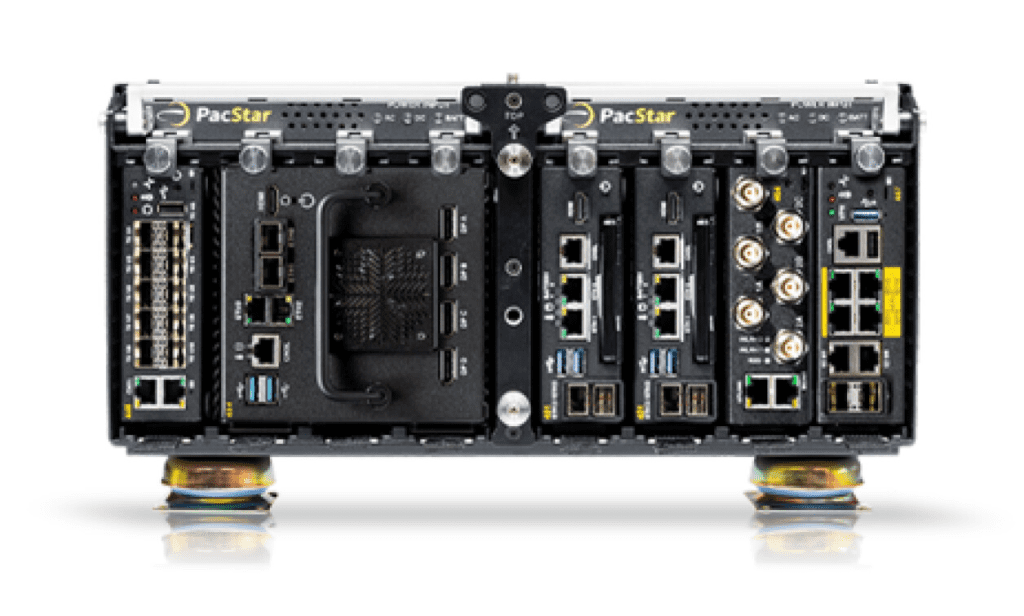History
November 25, 2024

The U.S. Department of Defense (DoD) Coalition Joint All Domain Command and Control (CJADC2) system is revolutionizing modern military operations by integrating data across all military domains: land, air, sea , space and cyberspace. For effective multi-domain operations, sensor data must be processed quickly and shared across different military branches. Achieving this level of interoperability requires sophisticated technologies to manage large and complex data streams in real time, particularly artificial intelligence (AI) and parallel sensor fusion processing at the edge.
AI and machine learning (ML) algorithms, core elements of CJADC2, help automate decision-making by quickly analyzing diverse data sets from various sensors and sources. These algorithms excel at processing complex sensor data, identifying patterns, generating actionable intelligence, and, perhaps most importantly, they do not become fatigued or distracted like a human operator would. In the CJADC2 environment, information from different systems – whether airborne, space or ground sensors – must be harmonized into a common operational picture (COP).
For interoperability, AI serves as a bridge between disparate data systems and protocols. Military platforms and sensors have often been developed independently and are not inherently designed to communicate with each other. AI-based systems can standardize data formats and protocols, transforming raw sensor data into actionable intelligence accessible and used by all branches of the military, our allies, and coalition partners. Generating a COP requires data from multiple sensors to be combined and correlated to create a unified understanding of the environment. For example, radar, video, and infrared sensors can all capture data at the same time, but each sensor provides a different perspective of the same battlefield.
Properly configured CJADC2 systems can analyze all sensor inputs simultaneously, merging them into a more detailed operational picture. This ability to analyze sensor data in real time is essential in rapidly changing combat environments, where delays can cost lives. AI algorithms drive sensor fusion by analyzing relationships between data streams and identifying threats or opportunities that individual sensors might miss.
Edge computing is an integral part of CJADC2 because it allows sensor data to be processed close to where it is collected, rather than relying on a centralized data center. When data flows back to a central command, delays can harm military operations. While a data center can handle orders of magnitude more processing, edge systems can operate independently in environments where communications are denied. This factor is crucial to ensuring real-time actionable information is available to commanders, regardless of battlefield dynamics. Tactical-edge data processing ensures operators can act immediately based on real-time data.
Edge systems, such as Curtiss-Wright’s PacStar 454 GPU-enhanced server, provide the computing power needed to process large-scale AI inference and sensor fusion at the tactical edge. These systems can be used in mobile, vehicle-mounted or remote environments.
AI and ML-powered sensor fusion at the edge represents the future of CJADC2 interoperability. The military can leverage these technologies to create a transparent, real-time understanding of the battlefield to make faster, more informed decisions. Edge computing platforms are essential to this future, enabling real-time processing of large amounts of sensor data in austere environments. However, implementing AI and sensor fusion in CJADC2 faces several challenges:
- Data collection: The old adage “garbage in, garbage out” applies to both AI-based systems and existing system designs. Battlefield data must be collected and fed back into the datasets used for training/retraining AI models. Ideally, data is stored at the edge and transferred to a data warehouse when connectivity allows.
- Data standardization: AI systems must handle different data formats and protocols from various sensors, making it essential to establish standardized formats and labeling systems for sensor data.
- Security: As AI systems become an integral part of military data processing, they also become prime targets for cyberattacks. Secure and encrypted communication between sensors and AI systems must be guaranteed. Data at Rest (DAR) solutions certified by the National Security Agency (NSA) Commercial Solutions for Classified (CSfC) provide double-encrypted data storage solutions.
- Scalability: As the number of sensors and data streams increases, AI systems must scale efficiently, maintaining performance while ensuring interoperability between different military platforms.
These challenges related to data standardization, security and scalability must be addressed to fully realize the great potential of CJADC2.

(Figure 1 *The PacStar Tactical Fusion System (TFS) is a modular, AI-based, expeditionary, tactical and sensor data processing and sensor system to enable sensor-to-shooter connectivity.)
Dominic Perez is CTO at Curtiss-Wright Defense Solutions and a Curtiss-Wright Technical Fellow.
Curtiss-Wright Defense Solutions
Featured Companies




